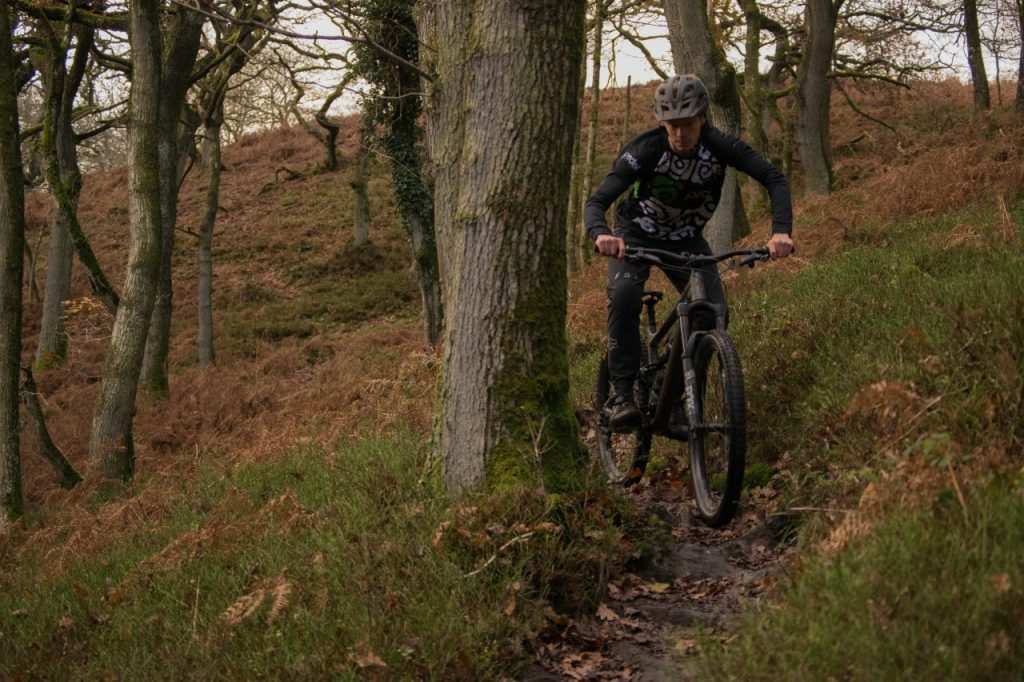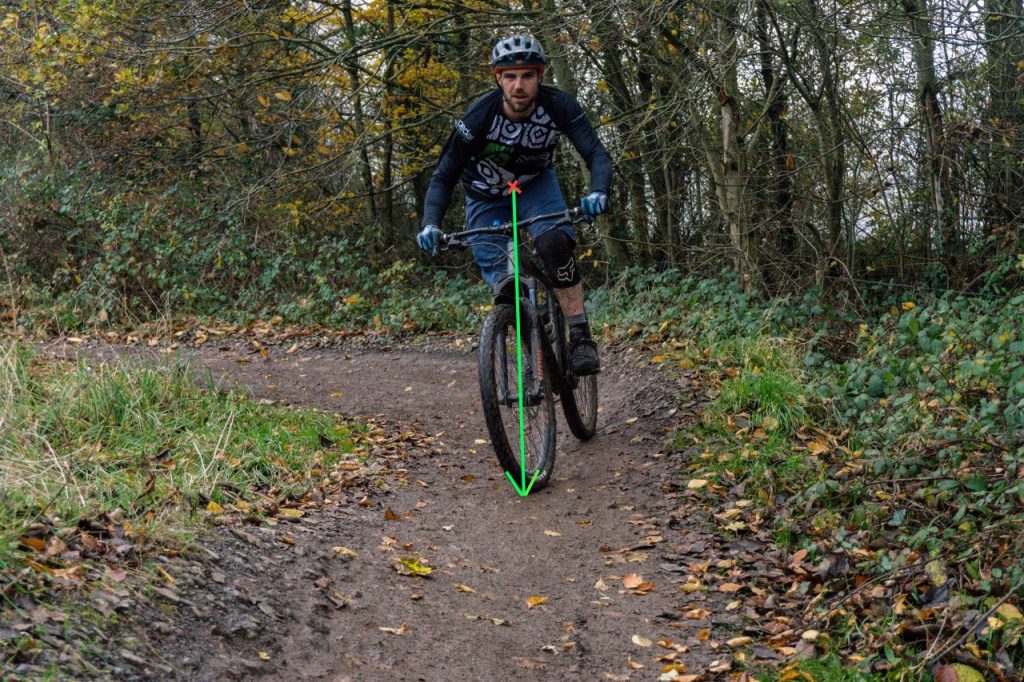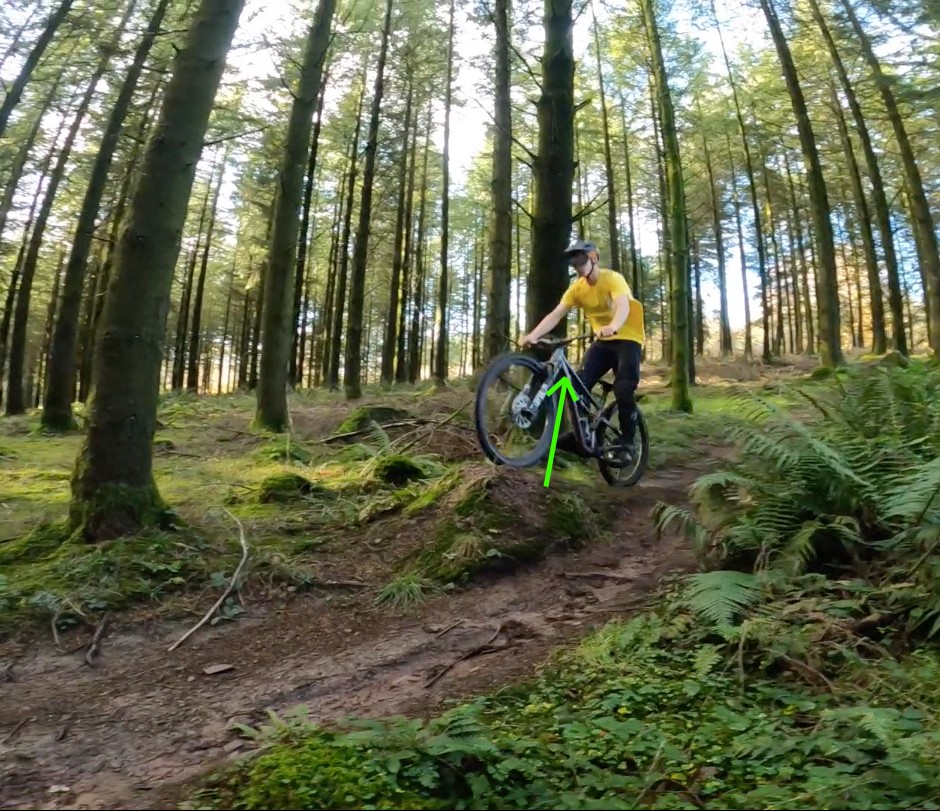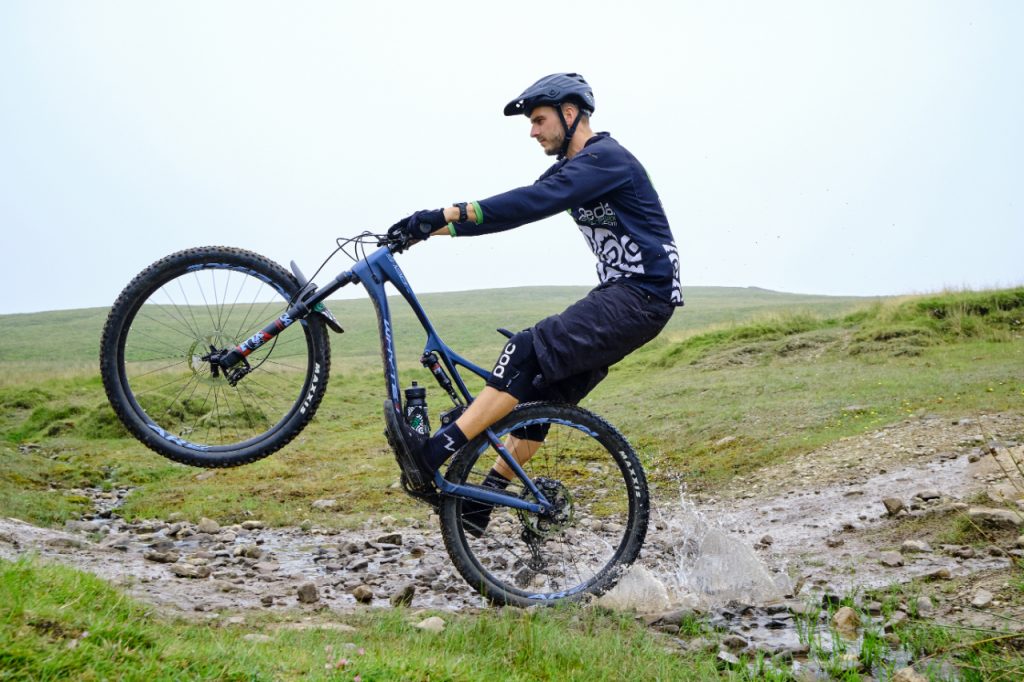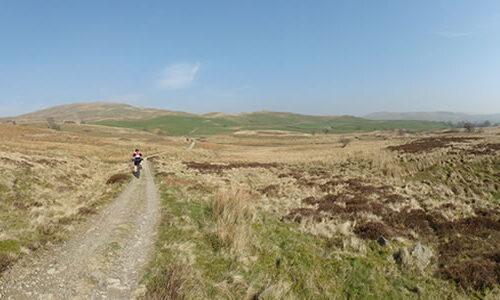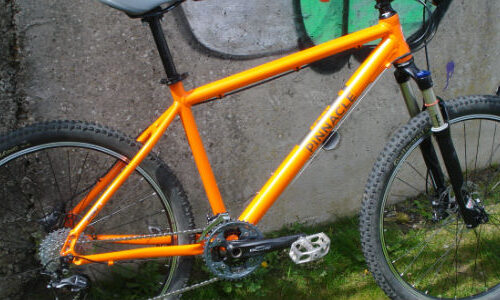Almost all of our skills sessions start with the fundamentals. We centre this around establishing a “ready” position. In this post, we will work out why this position is so important.
Generally speaking, when a rider comes to us for skills coaching they are looking to improve their descending skills. Whether this is jumping, cornering or simply riding smoothly, this largely happens on descents and is where riding is the most complex.
Regardless of your ability level, starting with the “ready” position allows us to ride smoothly whilst developing the foundations for more complex skills.
What Are We Trying To Achieve?
In it’s simplest from, we can think of riding as a balance challenge. If we are balanced when riding, we can control our bike and increase our speed!
How Do You Stay Balanced?
When we are knocked off balance our Centre of Gravity (COG) – the point from which gravity appears to act on an object – is moved outside of it’s base of support and the force of gravity pulls us towards the ground. Therefore, to stay balanced, we want to prevent our COG from moving.
In this video, despite the extreme movements going on, the COG (represented by the blue ball) moves very little and the person remains balanced. This is what we want to achieve when we are riding.
Where Is Our Centre Of Gravity When Riding?
We have established that to remain balanced our COG needs to stay in roughly the same position. We now need to work out where our COG is.
Given that everyone is different, it is impossible to locate an exact COG for humans and, given that we are constantly moving, our COG is moving as well. However, generally speaking, it lies somewhere around our hips and stomach, when we are standing upright.
Therefore, when we are riding in a standing up position, we can assume that our COG is in a similar place. An easy way to think of this is thinking about your COG being your “weight”. Generally, you can focus on your “weight” being around your hips/stomach when you are riding.
What Moves Our Centre Of Gravity?
As we have established, if we can keep our COG isolated then we should be balanced. But what moves our COG?
In most cases when riding a bike, it is an external force from the trail that moves our COG off balance. This is a bit of an abstract concept as the trail doesn’t move, but it exerts and equal and opposite force when the bike comes in contact with it.
For example, below we can see the rider is encountering a take off, which is pushing the bike backwards and up, causing the suspension to compress.
How Do We Stop Our COG From Moving?
To prevent our COG from moving, we want to be able to respond to these external forces and prevent them from moving our COG.
This means we will use our limbs to respond to these forces, keeping our torso (where our COG is) in the same position.
In this video, if you focus on watching the rider’s torso and head, you will see how little they move when he rides the trail, despite all sorts going on on the trail. He is isolating his head and torso.
Using The Ready Position
So we know that to stay in control and increase speed, we need to stay balanced. To stay balanced, we need to find a stable position from which we can use our limbs to be dynamic/move in response to the trail. This is where the ready position comes in.
This position gives you a reference point which allows you to be relaxed but ready to respond to the trail. The stronger you can make this position the more stable it will be, and the higher the chance of staying balanced as the trail changes.
Not The Be All and End All
In the same way as a tennis player is always aiming to return to the centre of the court between each shot, riders should be aiming to return to this position between each feature on the trail, as opposed to always remaining in the position.
It is the position that you should start from or always be aiming to return to. Riding a trail is a dynamic activity and depending on the track, you may only be in the position for spilt seconds at a time, but the position acts as a reset which prepares you for the next section of trail.
As you can see in this video, the position relative to the bike is constantly changing, but the rider is always working to get back to the stable ready position even after landing the jump.
Practice Makes Perfect
We will often coach this position off the trail before taking riders to consolidate it on the trail. What becomes important is understanding how the position works to centre your weight on the bike. Repeatedly practicing this off trail first means we can focus solely focus on the position without the complexity of the trail, ensuring your muscle memory subconsciously resets to this position.
This is similar to surfing where one of the key skills is the ‘pop up’ (when the surfer goes from paddling to standing). Surfers practice this on the beach before going in the water, meaning the position can be nailed before the complexity of the wave is introduced. As with the ready position, when they ‘pop up’ on a wave, it needs to be right every-time, weight evenly distributed, ready to respond to the changing shape of the wave.
A surfer will warm up by practicing this move on the beach several times to remind their body what it needs to do. We can replicate this by practicing our ready position in a safe environment to try and get it as perfect as possible before hitting the trail.
Setting The Foundation
Having this position dialled means that we can then work towards more complex skills.
For example, if you want to learn to jump, first you need to be able to pump and manual. Both pumping and manualling are techniques that start and end with the ready position. If we can master the ready position, then understanding and executing these more advanced techniques will become easier and intuitive.
So there we have it, a breakdown of why we start with the ready position. This is only an introduction and what this position looks like for you differs from for someone else. However if you understand the “why’s” then using the position will become a lot easier.
If you want to get your ready position dialled, to progress your riding, get in touch with us to book a skills session. You can learn more about our coaching here.

